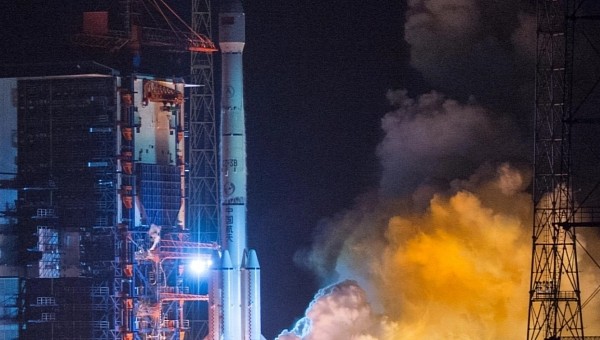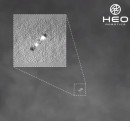Another day, another potential space debris from Long March 3B. This time, the Philippines Space Agency issued a statement about the potential debris drop zones.
This is truly not the first time this has happened with a Chinese rocket. In April 2022, villagers from a remote area of India found several pieces of what were expected to be parts of the Long March 3B rocket re-entering the Earth’s atmosphere. Engineers from space agencies usually design a booster, allowing them to safely maneuver the rocket to a safe spot, or a stabilization system that slows down the re-entry.
On December 29th, 2022, PhilSA published an image of the potential impact zones of the unburned debris from the Long March 3B rocket. The rocket lifted off on Thursday, December 29th, 2022, from the Xichang Satellite Launch Center in Xichang, Sichuan Province, China. The purpose of this launch was to carry the Shiyan-10 02 satellite. The word “shiyan” means experiment or test in Chinese, and the satellite truly stands up to its name. It will be used for experimenting with and monitoring new space technologies.
“Based on the Notice to Airmen (NOTAM) issued by the Civil Aviation Administration of China (CAAC) to the Civil Aviation Authority of the Philippines (CAAP), expected unburned debris, such as the rocket boosters and payload fairing, is projected to fall within a drop zone area located within the vicinity of Recto bank (located at the West Philippine Sea), approximately 137 kilometers from Ayungin Shoal and 200 kilometers from Quezon, Palawan,” Philippine Information Agency stated.
These estimated drop zones are not exact and might change due to the Earth’s rotation, weather, and climate conditions.
“While not projected to fall on land features or inhabited areas within the Philippine territory, falling debris poses danger and potential risk to ships, aircraft, fishing boats, and other vessels that will pass through the drop zone,” according to PhilSA explanation over the unburned debris.
PhilSA also informed the villagers that there might be a possibility for the debris to wash around the coasts and urged the people to not come in close contact with the materials.
It has been a busy year for China’s space agency, with over 60 rocket launches. Four of them were launched in only six days. It was even busier for scientists around the world to detect the falling debris that came from a few of these rockets. The last one to be detected was a 23-ton (21 metric tons) Long March 5B rocket body that fell over the South Pacific. The rocket sent the final Mengtian experiment module to China’s Tiangong space station.
Fortunately, no person has ever been hit by any of that debris in previous launches, but a few buildings were destroyed in 2020 in the Ivory Coast.
On December 29th, 2022, PhilSA published an image of the potential impact zones of the unburned debris from the Long March 3B rocket. The rocket lifted off on Thursday, December 29th, 2022, from the Xichang Satellite Launch Center in Xichang, Sichuan Province, China. The purpose of this launch was to carry the Shiyan-10 02 satellite. The word “shiyan” means experiment or test in Chinese, and the satellite truly stands up to its name. It will be used for experimenting with and monitoring new space technologies.
“Based on the Notice to Airmen (NOTAM) issued by the Civil Aviation Administration of China (CAAC) to the Civil Aviation Authority of the Philippines (CAAP), expected unburned debris, such as the rocket boosters and payload fairing, is projected to fall within a drop zone area located within the vicinity of Recto bank (located at the West Philippine Sea), approximately 137 kilometers from Ayungin Shoal and 200 kilometers from Quezon, Palawan,” Philippine Information Agency stated.
These estimated drop zones are not exact and might change due to the Earth’s rotation, weather, and climate conditions.
“While not projected to fall on land features or inhabited areas within the Philippine territory, falling debris poses danger and potential risk to ships, aircraft, fishing boats, and other vessels that will pass through the drop zone,” according to PhilSA explanation over the unburned debris.
PhilSA also informed the villagers that there might be a possibility for the debris to wash around the coasts and urged the people to not come in close contact with the materials.
It has been a busy year for China’s space agency, with over 60 rocket launches. Four of them were launched in only six days. It was even busier for scientists around the world to detect the falling debris that came from a few of these rockets. The last one to be detected was a 23-ton (21 metric tons) Long March 5B rocket body that fell over the South Pacific. The rocket sent the final Mengtian experiment module to China’s Tiangong space station.
Fortunately, no person has ever been hit by any of that debris in previous launches, but a few buildings were destroyed in 2020 in the Ivory Coast.






